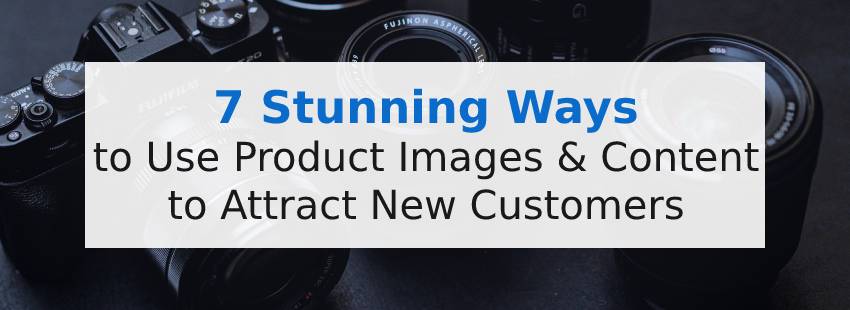People often spend a few seconds looking at a marketing campaign as they scroll through their social media feeds and search results. How do you get their attention in such a short period? When you add product images to your content, you give potential customers a better idea of what your brand has to offer.
This guide will look at how you can use product images to attract new customers and increase your sales. From increasing social media visibility to helping your site improve its search ranking, images can help take your online presence to the next level.
Let’s get started!
Why should you use product images and content?
Images are powerful marketing tools as they don’t just take less time to understand but also leave a lasting impact on viewers. There is truth to the saying that a picture is worth a thousand words. While you can list all of your product’s specifications, nothing can match a high-quality image when it comes to convincing a potential customer to give your brand a try.
Aside from being easier to perceive and understand, images are also easier to share, especially through social media. For example, Instagram ads have become the Holy Grail of visual storytelling. When you’re using image-centric platforms like Instagram and Pinterest for marketing, a good image can make or break your success.
Here’s an example from Coconut Bowls, an online retailer known for its beautiful and eye-catching product imagery:
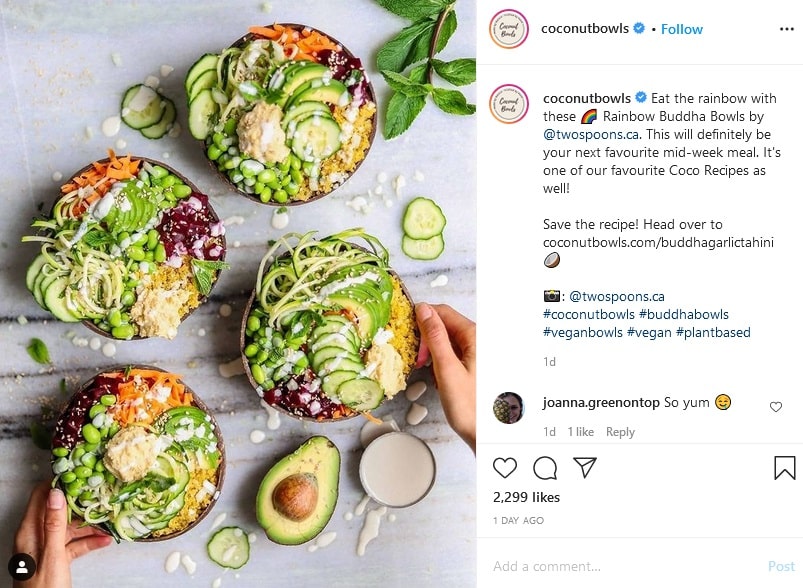
If you’re still not making use of Instagram Stories for your business, then you aren’t maximizing your brand awareness. An Instagram story maker lets you use ready-made templates and doesn’t need design skills to master them.
One study suggests that when subjects heard a piece of information, there was a 10% likelihood they would remember it three days later. In contrast, after they viewed an image, they were 65% more likely to remember it after the same span of time. Using product images can help your audience recall your products and boost your conversion rate.
In the next section, we will look at different ways to use images and content to your brand’s advantage.
7 ways you can use product images and content to attract customers
To maximize the impact of high-quality images, you need to make them the centerpiece of your social media strategy. You also need to incorporate them into your website design, Google business page account, and email marketing. Great product images allow you to highlight your offers across formats without creating additional material from scratch.
Here are seven ways you can use images as an integral part of an effective marketing strategy:
- Perform SEO on your images
- Feature product images on social media
- Post user-generated content
- Include images in email marketing
- Add images to your Google My Business account
- Use high-quality product images on product pages
- Offer a 360-degree view of your product
1. Perform SEO on your images
Most businesses focus on the text, headline, and HTML tags of their content. However, they don’t realize that images have an impact on their site’s search ranking. By performing SEO on your images, you can help them show up on Google image searches. This is important when you’re running an ecommerce site that depends heavily on product images to attract customers.
How do images influence your site’s search visibility? Google is gradually pivoting towards more visual content in search results. In fact, images now sometimes occupy a more prominent position in Google searches. For example, searching for “snowmobile” will yield the following top results:
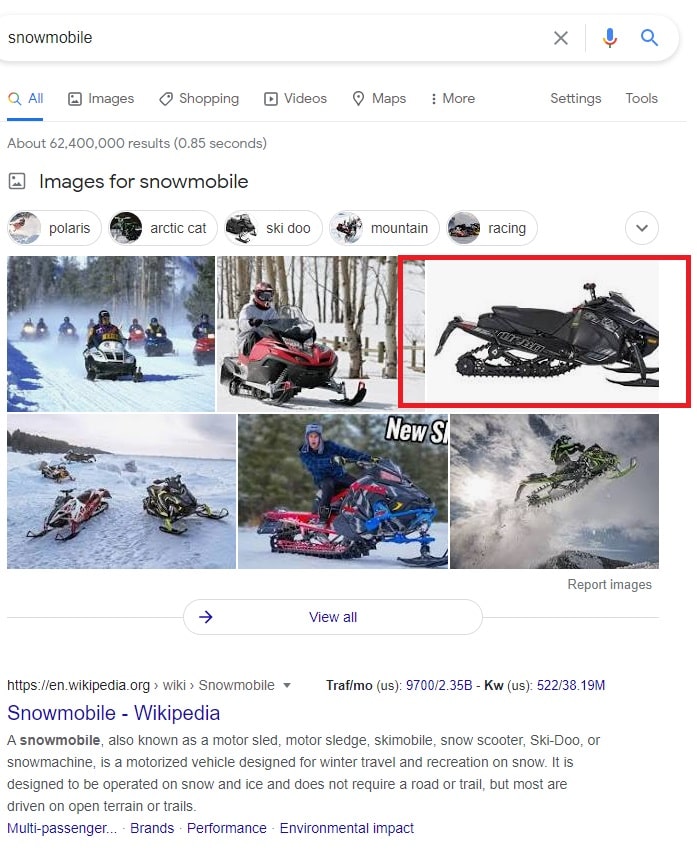
The third top result leads to an article called “5 New Snowmobiles That Will Get Your Adrenaline Pumping in Winter” on a review site called Robb Report. The image itself doesn’t appear on the top of the page but appears after a few paragraphs:
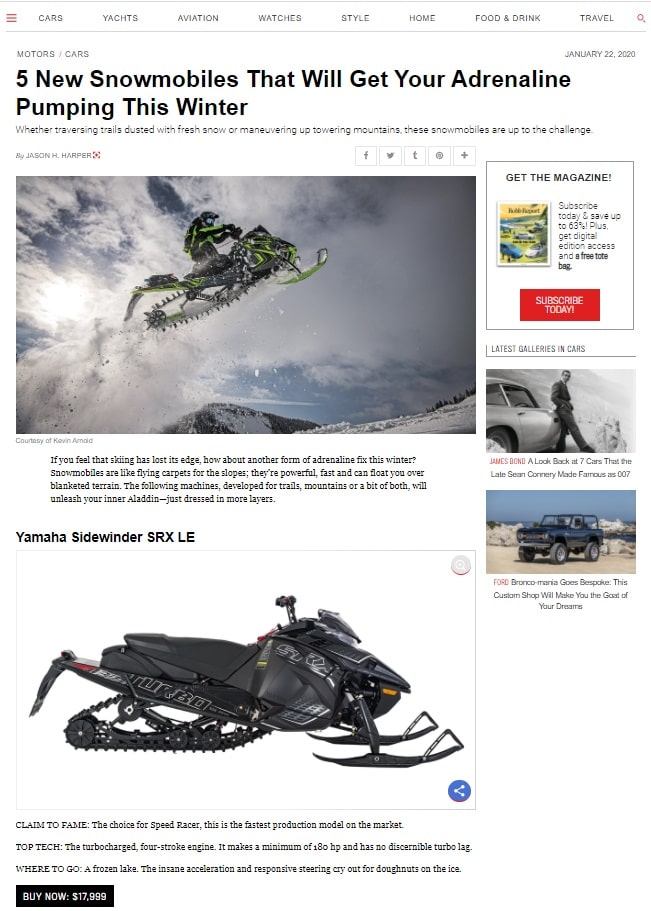
Why does the photo of the Yamaha Sidewinder occupy a higher search position than the article’s banner image? A quick look at the site’s HTML code gives us an idea:

The code above appears on Line 132 of the article page. On the other hand, the top image doesn’t have any alt tags:

While Google Images uses several factors to rank image results, it’s clear that high-quality images alone aren’t enough to increase page visibility. You need to tinker around a bit with image SEO to make them rank higher in search results.
The example above shows the importance of alt tags in product images. Alt tags are often used to act as placeholders in case an image fails to load. Google also uses them to determine what the image file is supposed to contain.
When you add proper alt tags to your image, Google recognizes and indexes them immediately. This leads to the image getting featured in Google Images results. In turn, this results in higher traffic and more conversions.
2. Feature product images on social media
Product images on social media can attract attention to your offers and help you create content that is both informative and easy to share. A study found that about 74% of the respondents used visuals heavily in their social marketing campaigns. If close to three-fourths of marketers use product images, there’s no reason you shouldn’t be doing the same for your brand.
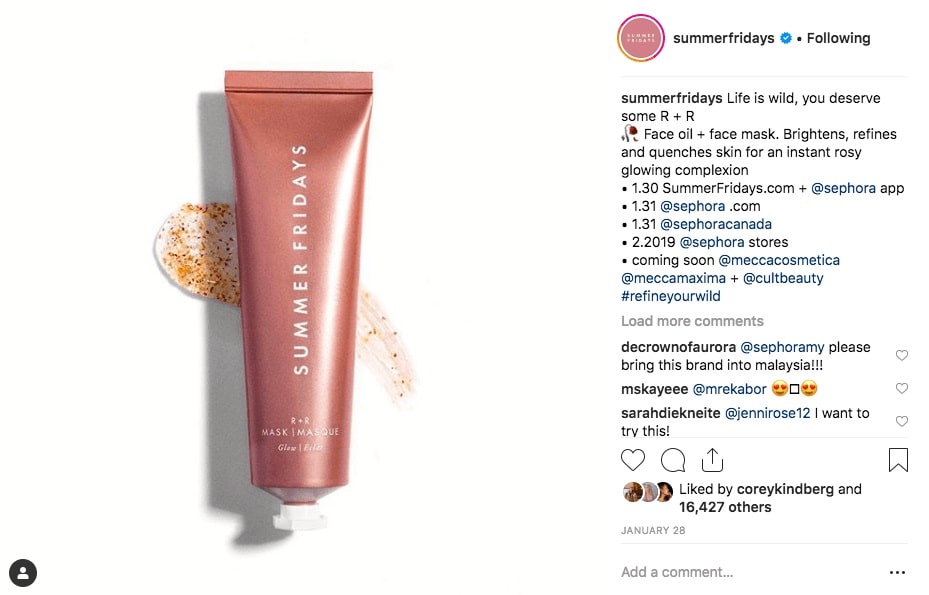
The Instagram post above, from beauty brand Summer Fridays, is simple and focuses on the product itself. Even if the image is accompanied by only a short description of its features, it drives engagement and shares. It also works because while the post itself is information-heavy, it also aligns with the brand’s story.
There’s a qualifier for posting product images on social media, though. Facebook often shows the image that appears first on the page that you’re linking to. This means you need to ensure that the page has great product images too.
On the other hand, Instagram does not allow links in post captions, limiting its usefulness as a source of website traffic. If your business isn’t based in a location where Instagram Shop is available, you need to be creative with your approach. For example, you may use external links or swipe-ups in Instagram Stories to link back to your product page.
3. Post user-generated content
While you can always use professional product images on your website, user-generated content (UGC) is a lot more engaging. UGC consists of visual content featuring your brand created by your followers and shared on social media.
People tend to believe that a product has merit if a customer shares their experience with it. Studies estimate that posts featuring UGC get 4 times more click-throughs than branded content. It also increases audience engagement up by 28%. These posts don’t just increase sales; they also help you create a community around your brand.
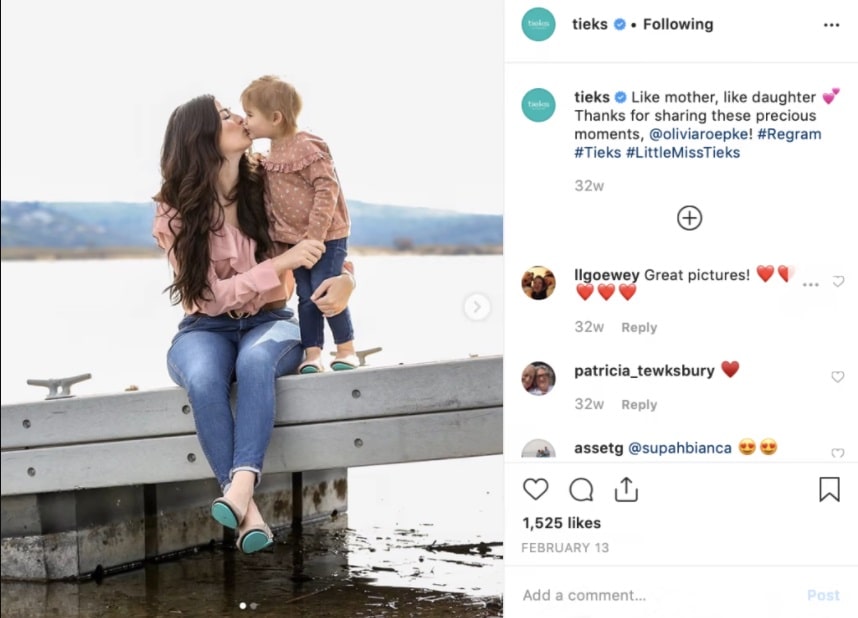
The example above from Tieks uses a user-generated image to promote its line of shoes. Unlike typical product images, which place the product front and center, user-generated content features your brand in an everyday setting. In the example above, we don’t see the shoes themselves that much. Instead, our attention goes to the mother-and-child duo, which is an even more powerful visual cue.
How do you encourage users to generate content that’s good enough to serve as product images? You could run a contest where users can share photos of themselves using your product and allow them to tag your social media page. You can then offer prizes for the posts that have the most likes and comments.
You can also use hashtags to help spread the word about your brand. These are particularly effective on Instagram and Twitter. One of the most successful hashtag campaigns, Red Bull’s #PutACanOnIt, began as a single piece of user-generated content that most users would find ridiculous (seriously, who holds Red Bull cans over Mini Coopers anyway?).
But because Red Bull takes fun seriously, it took the idea, gave it a hashtag, and ran away with it. The result? Over 10,000 photos with the hashtag #PutACanOnIt on Instagram and Twitter. It became so successful that other brands wanted to join in the fun:

Source: Shorty Awards
User-generated content is free, authentic, and relatable – all desirable traits in a promotional campaign. It also attracts new customers who want to see what the fuss is all about. When your followers post on social media and tag you or use your hashtags, it gives your brand exposure to new audiences.
4. Include images in email marketing
Organic ranking and search engines are not the only ways to drive traffic to your site. Email marketing helps you turn your subscribers’ inboxes into your personal marketing solution. While SEO software helps attract potential leads through Google searches, email marketing helps you convert the lead into a customer.
According to Campaign Monitor, the ideal email copy length is between 50 to 125 words. If you feel you cannot keep your word count to a minimum, you may add images to your email campaign and let the images speak for themselves.
Adding product images to your marketing emails also helps you create a brand identity and reinforce your brand’s story. For example, Apple’s clean and monochromatic aesthetics are consistent through different channels. On the other hand, National Geographic makes heavy use of images, videos, and colors to reinforce its brand identity:
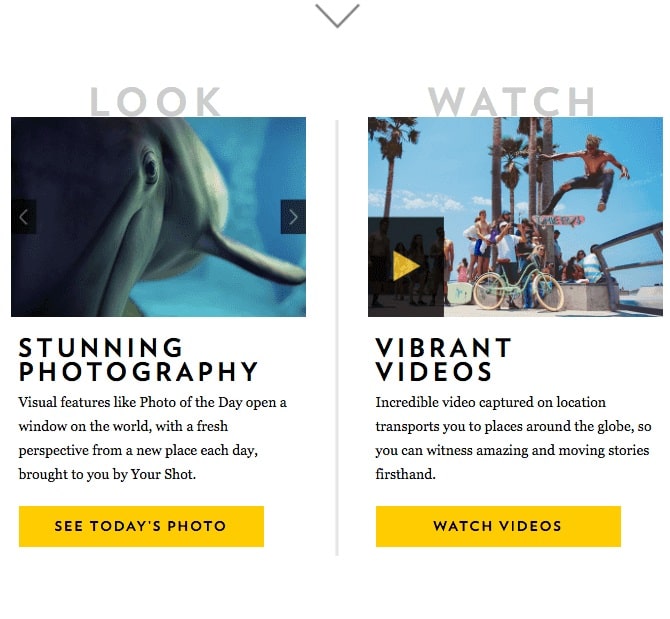
Source: Campaign Monitor
Take a look at National Geographic’s email newsletter above, which pulls the reader in with embedded videos of wildlife exotic locations. The entire newsletter convinces the reader to explore the NatGeo site further.
5. Add images to your Google My Business account
A Google My Business account is a vital marketing channel for small businesses that want to boost their local SEO. It helps drive consumers who enter local searches for businesses close to them. If they like what they see and feel safe about paying you a visit, they may come and check out your business.

The Google My Business page for the Jollibee restaurant allows customers to take a tour of the business in photos. It also contains contact details and address, business hours, and star ratings. These are all vital pieces of information a customer needs to make a dining decision.
Adding product images to your Google Business profile can encourage customers to give your business a try. If you already have a verified profile, you can open to Google Maps, go to your business profile, tap “Promote,” and choose the photos you’d like to upload. It’s a simple and easy way to increase visibility and give your business a visual presence.
6. Use high-quality product images on product pages
While social media is an excellent channel for showcasing your brand, your website also needs great product images. Using high-resolution images on your product pages allows the customer to see the item as if they were holding it in their hands.
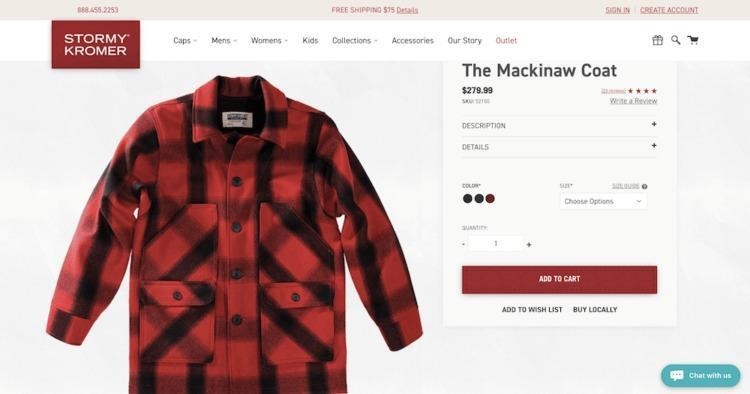
Source:Bigcommerce
The Stormy Kromer page above includes a short description of the item and offers different color options. It helps the customer look at different options and gives them an experience similar to being inside a physical store.
Aside from appearing on your website, product images also appear whenever you post a link to your blog on your Facebook page.
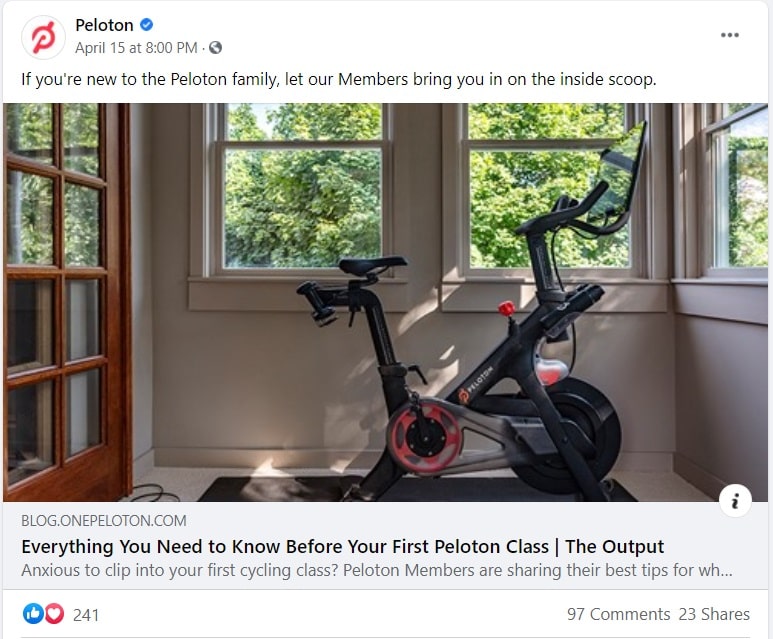
The fitness brand Peloton, for example, doesn’t just sell exercise bikes or treadmills. It also offers classes for all levels of fitness. In fact, it earns more from the classes than from the hardware it sells. However, because their bikes and treadmills are very attractive, they also make great subjects for product images.
Even if you sell non-physical solutions, such as software or services, you can always attach a screenshot of the product in action. These screenshots will help the customer imagine themselves using it. This is quite important as many customers consider the user experience before deciding to purchase a tool or solution.
7. Offer a 360-degree view of your product
Another way to make the product’s details evident is to show how it looks from each angle. There are three ways to do this. First, you can click high-resolution photographs of the product from multiple angles. Second, you can go the interactive way and include consumer touchpoints on the screen that enable them to take a complete look at the item. Third, you can insert a short video that gives you a 360-degree view of the item:
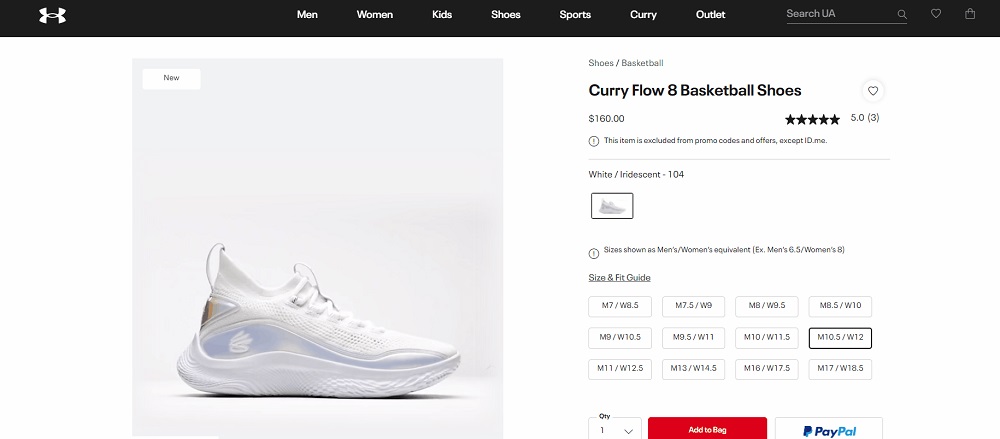
These product images are a great way to help users learn more about what they are buying. It gives them the feel of an in-store experience but with the convenience of online shopping.
Visuals are a great way to showcase your brand as they help you build a connection with your customer and showcase your brand’s story. They also help you create shareable and attractive content that attracts and engages your audience.
Use product images as a way to showcase your brand, highlight how it fits in with their lives, and tell your brand’s story. Using an SEO tool to add suitable tags to high-quality images will increase your search volumes.
Related Content
- 8 Product Photography Ideas to Help You Sell More Online
- 6 High-Quality Product Landing Page Designs & Tools to Use
- 6 Facebook Ad Image Best Practices that will Send your Click-Through-Rate to the Moon
- How To Build Your Online Brand With Images
- 200 Instagram Photos: Examples, Ideas & Resources for Your Business
Bottom line
Product images are a powerful tool for promoting your brand. A good product image has the following benefits:
- Informs your customers and helps convince them to try out your product.
- Allows you to market your brand to different audiences and across different channels.
- Boosts your brand’s search engine rankings and makes your product visible on Google Images through SEO.
- Offers your customers a closer look at your product. This is especially true when you include 360-degree photos and simple, zoomable images.
- Attracts more engagement through presenting well-defined use cases for your business.
The bottom line? Using creative, high-quality, and high-resolution images shows your brand in a better light and improves the user experience. This leads to new customers, stronger customer loyalty, and more revenue.

Written by our guest writer Nick Chernets, the founder of DataForSEO
A leading provider of SEO data for the marketing technology industry. With an API-led approach to data delivery, DataForSEO is enabling hundreds of software businesses to enhance their products with reliable, accurate, and fresh data.

